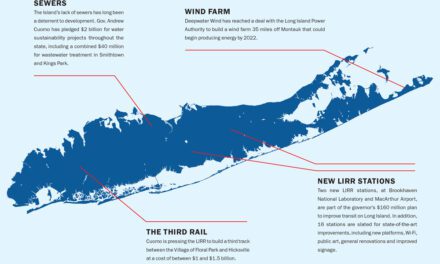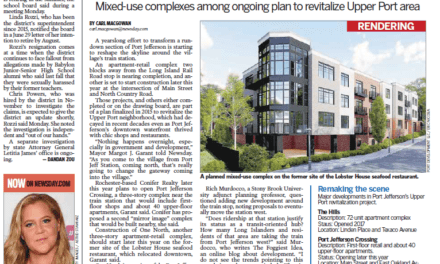In a recent LIBN Op-ed, Michael Watt describes “urban nodes”, a planning concept traditionally attributed to Kevin Lynch’s Image of the City, which broke down the most important elements of a city. According to Lynch, a node is a main focal point within the area. Watt’s op-ed expands the scope of Lynch’s concept to apply to the Nassau-Suffolk region, and calls for more downtown development to help keep our young professionals. As loyal readers of both Young Island and The Foggiest Idea already know, this concept has already been applied to Long Island in the late 1960’s and early 1970’s in the form of Corridors, Centers and Clusters. The notion is sound, and reflects the development principles that today’s buzzwords of “downtown” and “smart growth” development embrace.
However, Watt’s op-ed reflects a larger problem that Long Island has. We put all of our eggs into the “downtown revitalization” basket. The truth is, our region is too socio-economically diverse to bank that downtown redevelopment is the solution to Long Island’s woes. This approach to growth is an important component to helping us rebound after both the recession and Sandy, but is only in appropriate in certain areas. As I’ve been writing since I started- It’s simply not that easy.
The fear of the “brain drain” has been haunting our development policies since the early aughts. It was once asked “how do we prevent young professionals from leaving if they weren’t even born to begin with?” You can’t. We need to stop using buzzwords and start really grappling with the issues of the future. It’s all simple cause…and effect. The cause of Nassau and Suffolk’s regional woes? Policies built on the shaky foundation of buzzwords and planning trends. The effect- Lackluster solutions that barely address our problems.
Build it…and they will come?
When redeveloping downtowns, we need to remember two things. First, upgrade infrastructure to accompany the increased density and usage. This includes roads, rails and wastewater capture. Case in point- Smithtown has been grappling with the balance between pedestrian safety and flow of traffic. Recent changes to Main Street in downtown Smithtown have been successful in slowing traffic, exacerbating an existing bottleneck during daytime and commuter hours. There is a cause and effect of the solution lobbied and implemented by community groups. However, a direct result of slowing down traffic on NYS 25 creates a significant bottleneck, causing motorists to avoid the downtown area. Before that area can flourish, Smithtown’s downtown need sewers (which is always a work in progress) and increased road capacity that better balances pedestrian safety and traffic flow .
The second important factor is jobs. What do Long Island’s young professionals need and want? Jobs. And I am not talking the low-wage retail jobs we’ve become so fond of- we need high paying jobs.
Watt points out that downtown development will allow young professionals to “enjoy the lifestyle they desire living in Riverhead”. Anecdotally, I’ve worked in Riverhead- beyond the Suffolk Theater and limited restaurant scene; there simply isn’t enough to sustain the type of growth and expansion needed for the area to be successful. Besides, with every effort to drive people to the downtown, the Town allows another store to be constructed on Route 58. They are their own worst enemy. Cause and effect.
Think Regionally, Not Haphazardly
Our downtown areas are currently limited in their potential for attracting those hip, iPhone touting millennials everyone wants. Unless Riverhead starts attracting tech, industrial or green jobs, Smithtown expands their roads and builds sewers, or Port Jefferson finally allows parking garages, our downtowns will be reduced to buzzwords with proposals that are just excuses for increasing density. We should build in our downtown nodes, but do it wisely- as one part of a larger comprehensive plan that addresses our economic, environment and social woes. Think regionally, not haphazardly.
Watt is right to say that we face a choice. For Nassau and Suffolk Counties, it’s adapt or die, but it’s up to us to do it in the right manner.













